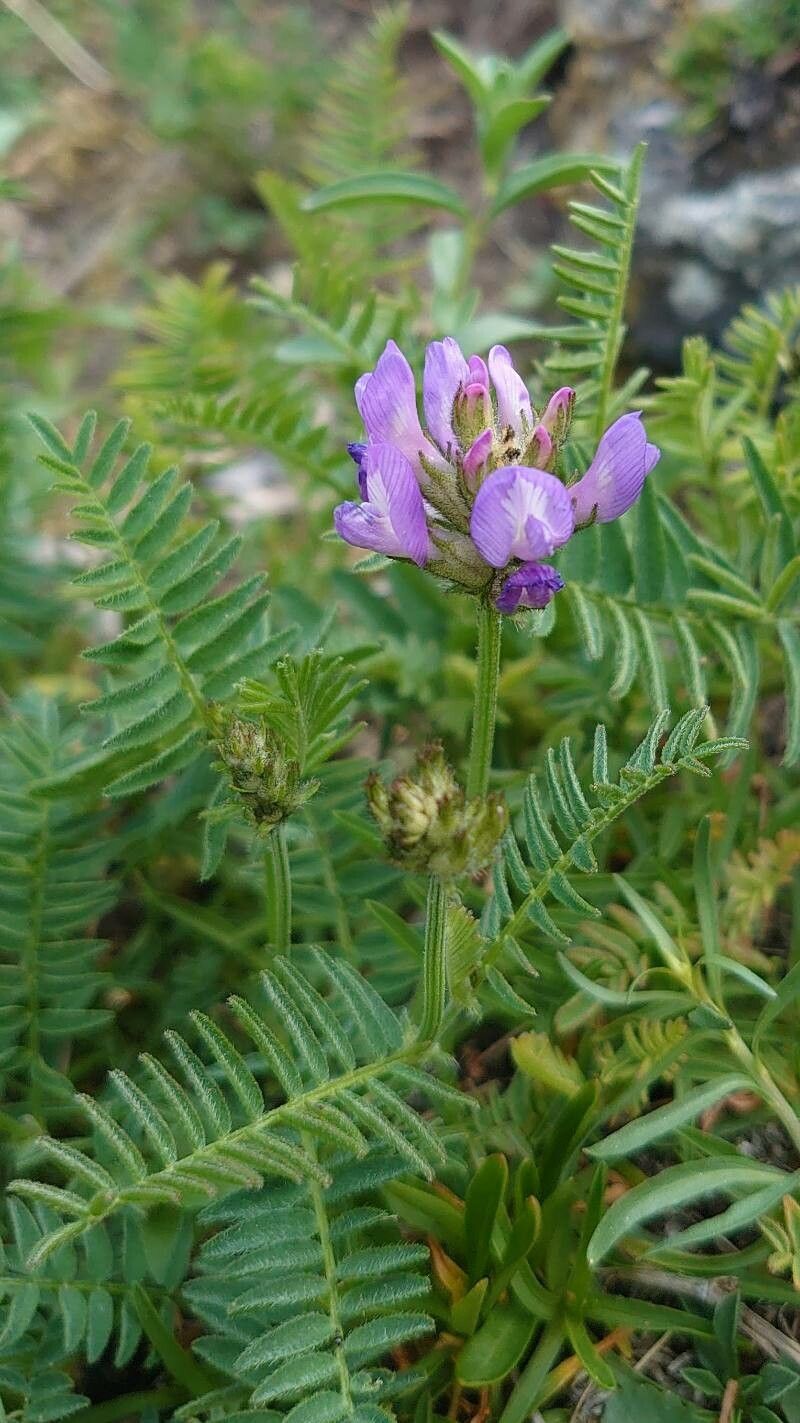Danish Milk Vetch
astragalus danicus
Also known as: ["Danish Milk Vetch"]
Overview
A perennial herbaceous plant in the legume family, native to northern Europe, known for its small yellow flowers and pinnate leaves.
Benefits & Perks
["wildlife attractant (bees, butterflies, birds)","drought tolerant","aesthetic foliage"]
Botanical Classification
| Phylum: | Magnoliophyta |
| Class: | Magnoliopsida |
| Order: | Fabales |
| Family: | Fabaceae |
| Genus: | Astragalus |
| Botanical Name: | Astragalus danicus |
Plant Characteristics
Basic Information
- Category: Flowers
- Suitable Location: rock gardens, alpine troughs, or sunny borders
- Suitable For:
- Is Weed: No
- Allergenicity: low
Environmental Needs
- Climate: {"temperatureRange":"0–30°C"}
- Hardiness: {"zones":"4–8"}
- Misting: rarely required, only if ambient humidity is very low
- Drainage: Fast-draining to prevent root rot.
- Soil Type: Well-draining, sandy loam with some organic matter; tolerates poor soils.
Maintenance Level
- Maintenance Level: moderate
- Toughness Level: moderate
- Pruning Frequency: As needed, typically after flowering or in late winter/early spring.
- Pruning Intensity: Light to moderate; avoid heavy pruning unless necessary for shape or health.
Care Details
Ideal Sunlight Coverage:
Full sun to partial shade; 6–8 hours of direct sunlight per day, with some afternoon shade in hot climates.
Sunlight Tolerance Tips:
Acclimate plants gradually to intense sunlight; protect from harsh midday sun; adjust placement based on seasonal light changes.
Care Requirements
Care Difficulty
moderatemoderate
Sunlight
full sun to partial shade
Rotate plant for even light exposure; use shade cloth in extreme heat; monitor for sunburn.
Watering
every 7–10 days during active growth, reduce in winter
Water thoroughly but infrequently; ensure soil dries between waterings; avoid overwatering.
Soil
well-drained, sandy loam with moderate organic content
pH: Slightly alkaline to neutral (pH 6.5–7.5).
Avoid heavy clay soils; amend with grit if needed; ensure soil is not waterlogged.
Temperature
Hardy in USDA zones 4–8; tolerates cold temperatures down to -30°F (-34°C); prefers cool to moderate temperatures.
Protect from late spring frosts; avoid placing in drafty areas; monitor temperature fluctuations.
Fertilizing
every 4–6 weeks during spring and summer
Fertilize sparingly; apply before new growth begins; stop fertilizing in late summer.
Propagation
Methods
Seed or division; stem cuttings can be challenging but possible.
Step-by-Step Propagation Guide
- Collect seeds or divisions.
- Prepare medium.
- Plant seeds or cuttings.
- Maintain moisture and warmth.
- Transplant once established.
Best Time: Spring or early autumn when temperatures are mild.
Environment
Warm, humid conditions with indirect light for cuttings; consistent moisture for seeds.
Medium
Well-draining seed starting mix or sandy loam for cuttings.
Hormone
Optional for cuttings, but rooting hormone can improve success rates.
Timeline
Seeds may germinate in 2–4 weeks; cuttings may root in 4–8 weeks.
Tools Needed
Pruners, rooting hormone, seed trays, pots, well-draining soil.
Quick Tips
Sow seeds shallowly; keep cuttings humid; be patient with germination.
Pruning & Repotting
Pruning Guide
Method
Trim back spent flower stalks; remove any dead or diseased stems; shape lightly if desired.
Pruning Plan
Minimal pruning needed; focus on removing dead or damaged growth to maintain plant health.
Tools
Pruning shears, gloves, clean cutting tools.
Checklist
Sanitize tools; remove dead growth; trim after flowering; shape lightly.
Repotting Guide
Best Season
Early spring before new growth begins.
Pot Size
For containers, choose a pot one size larger; for divisions, replant at the same depth.
Method
Gently lift the plant; divide roots if clumping; replant in fresh, well-draining soil; water thoroughly.
Suggestions
Not typically required unless grown in containers; divide clumps every 3–4 years to rejuvenate.
Checklist
Prepare new pot/area; divide if necessary; use fresh soil; water well; provide care post-repotting.
Advanced Care Tips
Watering Mastery
Watering Checklist
Check soil moisture; water deeply; ensure drainage; adjust for season.
How to Apply Water Properly
Water at the base of the plant, ensuring moisture reaches the root zone; allow excess water to drain away; water in the morning to reduce evaporation.
Watering Schedule Tips
Water deeply once the top inch of soil feels dry; reduce frequency in winter to prevent root rot.
Soil Improvement
Add sand or perlite for drainage; incorporate compost for fertility; ensure good aeration.
Temperature Stress Management
Signs of Temperature Issues
Wilting, leaf drop, or browning of foliage in extreme heat; stunted growth or dieback in prolonged cold.
Cold Stress
Plants may become dormant in winter; roots can suffer if soil freezes and thaws repeatedly.
Solution: Mulch heavily around the base; protect from harsh winds; ensure well-drained soil to prevent frost heave.
Hot Stress
Leaves may scorch or wilt; growth may slow; flowering may be reduced.
Solution: Provide partial shade during peak heat; increase watering; use mulch to retain soil moisture.
Fertilizing Guide
Fertilizing Checklist
Choose balanced fertilizer; apply in spring; water after fertilizing; avoid late-season feeding.
Fertilizing Method
Use a balanced, slow-release fertilizer in early spring; avoid over-fertilizing, as Astragalus danicus is not heavy feeder.
Common Problems & Solutions
Toxicity Warning
Cats
Non-toxicAstragalus danicus is not considered toxic to cats. It does not produce any known harmful effects when ingested by felines.
⚡ Toxic If:
if eaten
Dogs
Non-toxicAstragalus danicus is not considered toxic to dogs. It does not produce any known harmful effects when ingested by canines.
⚡ Toxic If:
if eaten
Humans
Non-toxicAstragalus danicus is not considered toxic to humans. It has no known adverse physiological effects when ingested.
⚡ Toxic If:
if eaten
Frequently Asked Questions
Q: Is Astragalus danicus toxic to pets?
A: There is insufficient data on its toxicity to pets.
Q: How does Astragalus danicus attract wildlife?
A: Its flowers are a nectar source for bees and butterflies.
Q: What are the typical care requirements for Astragalus danicus?
A: It prefers well-drained soil and full sun, with moderate watering.
Quick Reference
| Family: | Fabaceae |
| Care: | moderate |
| Light: | full sun to partial shade |
| Water: | every 7–10 days during activ |
Get Expert Care Tips
Download the Plantious app for personalized care reminders and plant identification!
Google Play App Store






